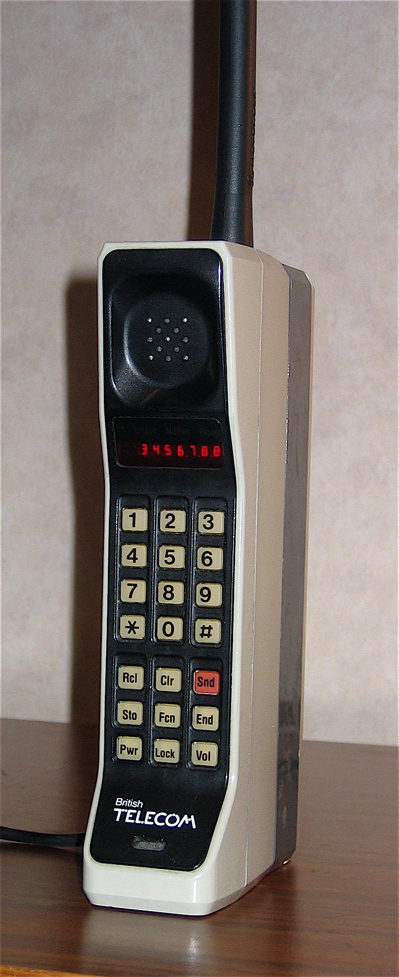Chapter 11. How to Stay Relevant
“Who controls the past, controls the future...”
George Orwell
In 1983, the first mobile phone became available for consumer purchase (Figure 11-1). More than 30 years later, there are over seven billion wireless subscriptions globally, and almost half of the human population owns at least one mobile phone. Anyone in the early 1980s thinking about the first mobile phones would have difficulty imagining how much the tiny portable devices (now used everywhere by most people, for a significant part of their day) would permanently change human society and culture. No longer is a phone just a way to speak with another person. You have a constantly available record of your communications with anyone in your address book or otherwise. It is a news source, a radio, a television, a camera, a GPS, and a means of interacting with your money, to name only a few uses. Civilization is rapidly evolving toward ubiquitous computing, and discovering all the challenges that come with it—not the least of which are privacy and information security. The mobile phone phenomenon is one of many technology shifts throughout history from which we can learn, in order to reasonably anticipate future trends, problems, and challenges.

Figure 11-1. DynaTAC 8000X circa 1984
Computing trends are often cyclical, coming into, going out of, and coming back into favor. For instance, ...
Get Crafting the InfoSec Playbook now with the O’Reilly learning platform.
O’Reilly members experience books, live events, courses curated by job role, and more from O’Reilly and nearly 200 top publishers.

